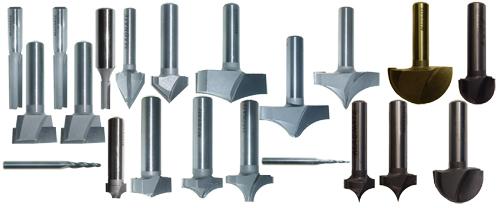Overview

A CNC router is a computer controlled version of a manual router. The router has a head that is moved in X, Y, and Z directions to machine the part layer by layer. The router can take a variety of bits for cuts of many shapes.

This process should be used when your part can be machined from a low profile slab of material with cuts coming from the top. Wood is the most common material used with a CNC router. The slab of material must fit on the table of the router with room for restraints. Some routers have a vacuum table that can be used instead of manually fastening to the table. These tables may require a bracing material as the machined material can’t be screwed into the vacuum table. Safety procedures for the specific machine should be reviewed and followed before use.
Some Supported Software
- Mastercam
- Solidworks
- Rhinocam
Check which software is supported by the machine (for example dFab only takes Rhinocam files).
Typical Materials
- wood
- polyurethane foam
- plastic
- soft metals*
- stone**
*typically CNC milling is used for metals but a router can be used on softer metals (not recommended)
**machining stone requires a special router with protection for its components, cooling, and special grinding bits
Locations on Campus
Hunt basement – IDeATe
This router requires an affiliated IDeATe course or individual training as well as several safety courses by Environmental Health and Safety.
Margaret Morrison sub-sub-basement – dFab
This router is available to architecture students.
Purnell first floor – School of Drama Scene Shop
This router is available to drama students
Image Sources
https://www.zenbotcnc.com/4848-4×4-CNC-Router-_p_20.html
https://www.magnate.net/ProductDetails.asp?ProductCode=RBCNC